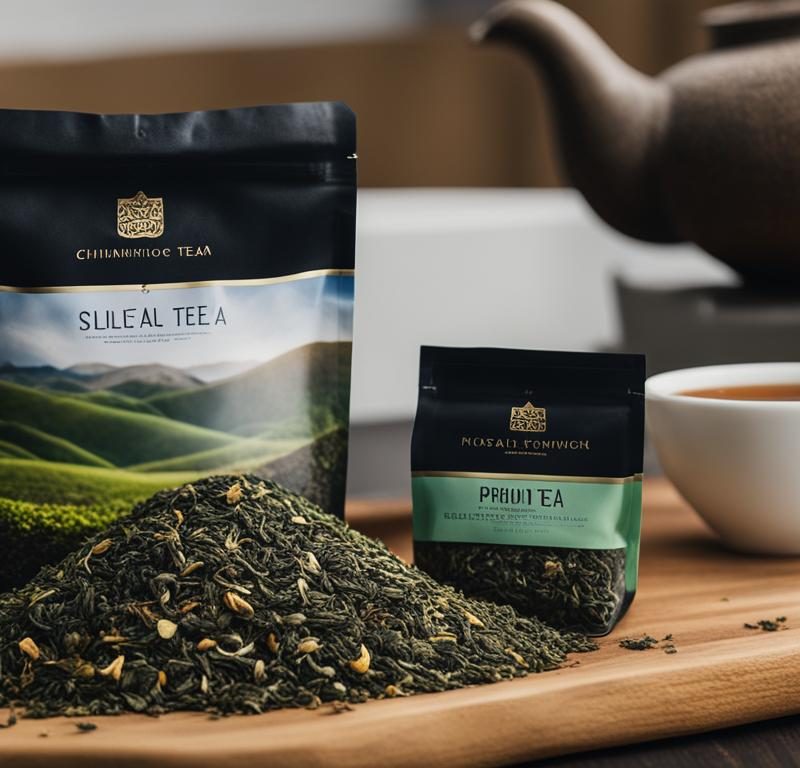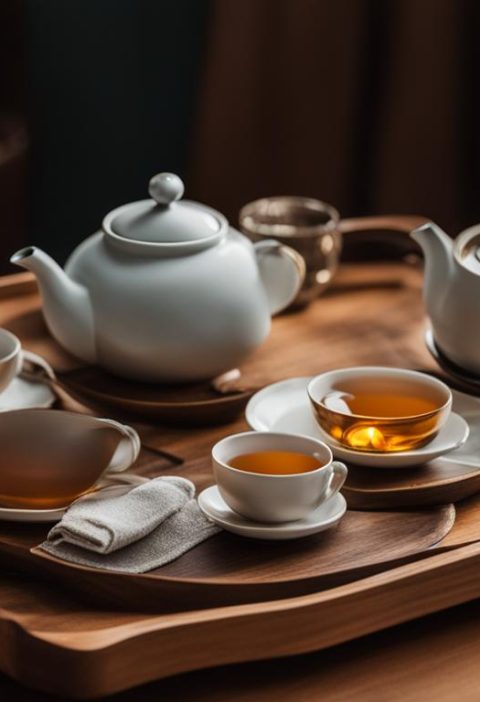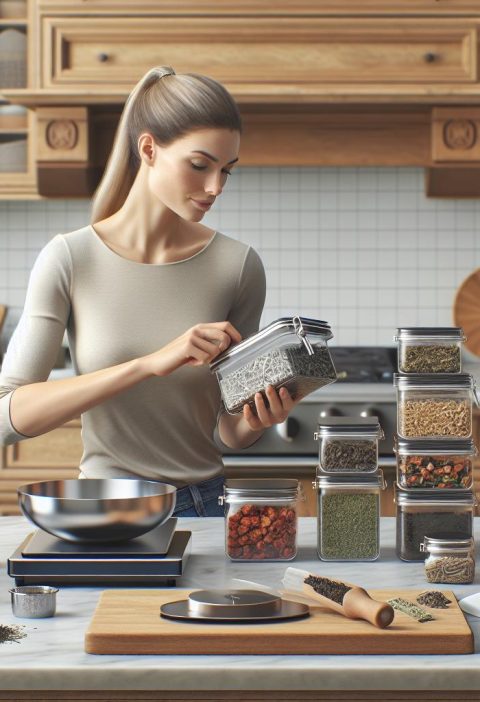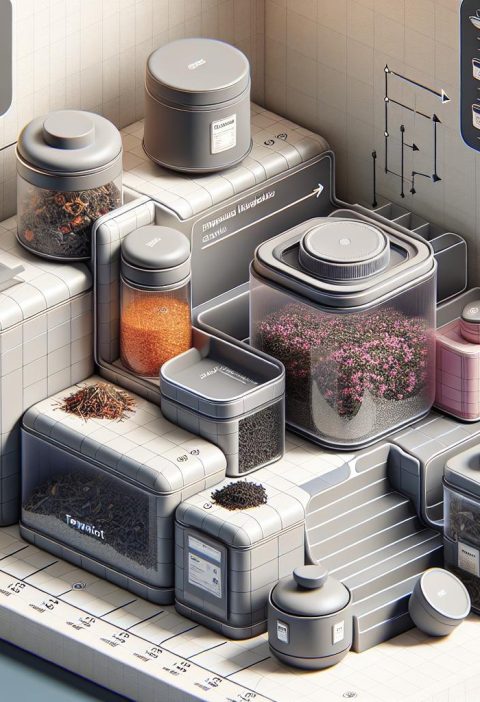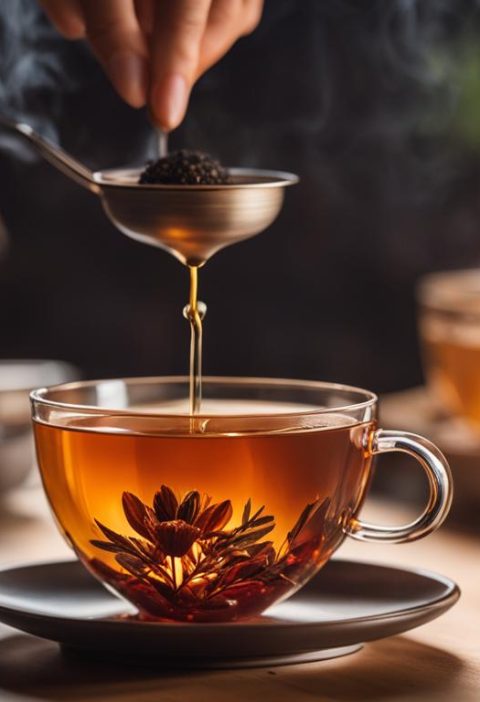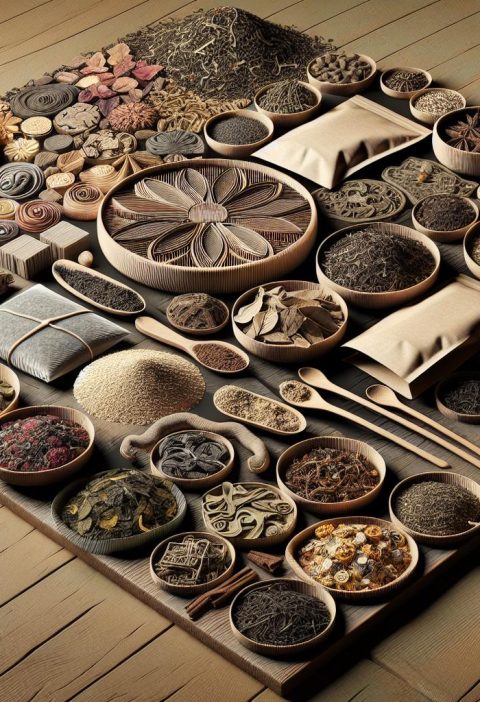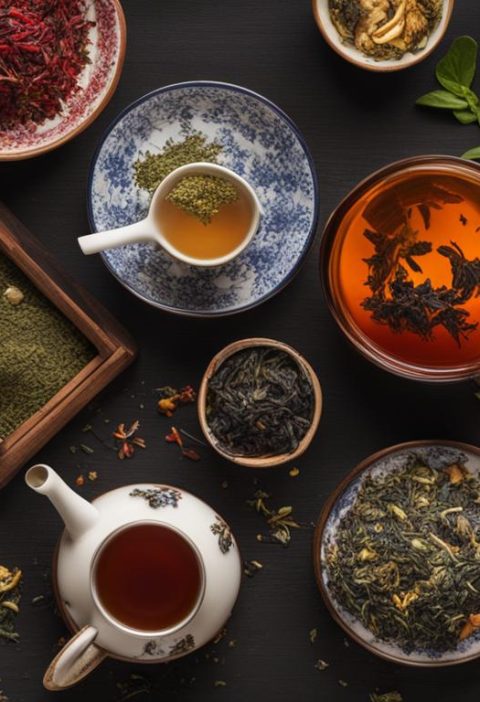Loose tea or bagged tea? It’s a common dilemma for tea enthusiasts searching for the best brew. But one factor that often plays a significant role in the decision-making process is cost. In this comprehensive cost comparison guide, we will delve into the world of loose tea and bagged tea to understand the differences in pricing, affordability, and overall value. Whether you’re a budget-conscious tea lover or simply curious about the financial aspect of your tea-drinking habits, we’ve got you covered.
Key Takeaways:
- When comparing the cost of loose tea and bagged tea, loose leaf tea often provides more cups per dollar.
- While loose tea may require the purchase of accessories like a strainer, it can still be a cost-effective option in the long run.
- Loose leaf tea is generally considered fresher than bagged tea due to the way it is picked and handled.
- Bagged tea undergoes a grinding process, which can lead to the loss of essential oils and flavors.
- Loose leaf tea offers a smoother, more pronounced taste profile compared to bagged tea.
- Loose tea tends to have a more fragrant aroma compared to bagged tea.
- While loose tea may take longer to brew, it is often preferred by serious tea drinkers for its enhanced taste and freshness.
- Both loose tea and bagged tea require proper storage techniques to maintain their quality.
- Loose leaf tea is the preferred choice among tea connoisseurs for its higher quality and overall value.
- Recommended brands for loose leaf tea include brand A and brand B, while brand X and brand Y are popular choices for pyramid-style tea bags.
Cost of Loose Tea vs Bagged Tea
When it comes to the cost comparison between loose tea and bagged tea, there are several factors to consider. Many studies have been conducted to determine which option provides better value for your money. Let’s delve into the price analysis of loose tea versus tea bags.
Different Pricing Structures
One of the reasons why loose leaf tea tends to be more cost-effective is due to the pricing structures adopted by tea companies. When purchasing loose tea, you are paying for the tea leaves themselves, whereas with bagged tea, you also pay for the cost of putting the tea into individual bags and the packaging. This added cost is passed on to the consumer, resulting in a higher price per cup for bagged tea.
Quantifying the Price Difference
To understand the cost comparison more clearly, let’s consider an example where we compare the price of loose tea and tea bags for the same weight of tea. Based on our research, loose leaf tea typically provides more cups per unit weight compared to tea bags. This means that for the same amount of tea, you would get more servings from loose tea, making it a more economical choice in terms of cost per cup.
However, it is worth noting that the overall cost analysis goes beyond the price per cup. For loose leaf tea, additional accessories such as a strainer may be required for brewing, which can add to the initial investment. Tea bags, on the other hand, offer convenience and often eliminate the need for additional accessories.
Cost Evaluation and Considerations
When deciding between loose tea and tea bags based on cost, it’s essential to consider your personal preferences, brewing methods, and long-term usage. If you are a frequent tea drinker and enjoy the ritual of loose leaf brewing, the upfront investment in accessories can quickly pay off in terms of savings per cup.
On the other hand, if convenience and simplicity are your primary factors, tea bags may be a more suitable choice despite the higher cost per cup. Additionally, some tea connoisseurs believe that loose leaf tea offers a better quality and taste experience, making it a worthwhile investment even with the added accessories cost.
Ultimately, the cost of loose tea versus tea bags is a subjective decision that revolves around individual preferences, brewing methods, and value perception. It’s important to assess your priorities and consider the long-term benefits when making your selection.
| Loose Tea | Tea Bags | |
|---|---|---|
| Initial Cost | May require purchase of accessories like a strainer | No additional accessories needed |
| Price Per Cup | Generally lower due to the absence of packaging costs | Higher due to packaging costs |
| Brewing Convenience | Requires additional steps such as using a strainer | Convenient and ready to use |
| Taste and Quality | Frequently preferred by tea enthusiasts for enhanced taste and aromatic experience | May have a more simple or artificial taste |
Freshness Comparison: Loose Tea vs Bagged Tea
When it comes to tea, freshness is key to enjoying a truly flavorful and aromatic cup. In this section, we’ll explore the differences in freshness between loose tea and bagged tea, examining the impact of picking and handling on tea freshness, as well as the storage considerations for both loose leaf tea and tea bags.
Impact of Picking and Handling
The process of picking and handling tea leaves can have a significant impact on their freshness. Loose leaf tea is often handpicked, ensuring careful selection of high-quality leaves. This manual approach allows for greater control over the leaves’ condition, resulting in a fresher product. On the other hand, bagged tea is typically machine picked, which may lead to the collection of debris, bugs, and twigs. Additionally, the mechanical process can cause damage to the tea leaves, compromising their freshness and flavor.
Storage Considerations
In addition to picking and handling, proper storage is essential for maintaining the freshness of both loose leaf tea and tea bags. Loose tea is best stored in opaque airtight jars, which protect the tea from air, moisture, light, high temperatures, and strong odors. This type of storage helps preserve the flavors and aromas of the tea, ensuring a fresh brew every time.
Tea bags, on the other hand, are typically individually wrapped for convenience and hygiene purposes. However, this packaging may not provide the same level of protection against air and moisture as airtight containers do. Therefore, it’s important to store tea bags in a cool, dry place away from light and strong odors to maintain their freshness for longer.
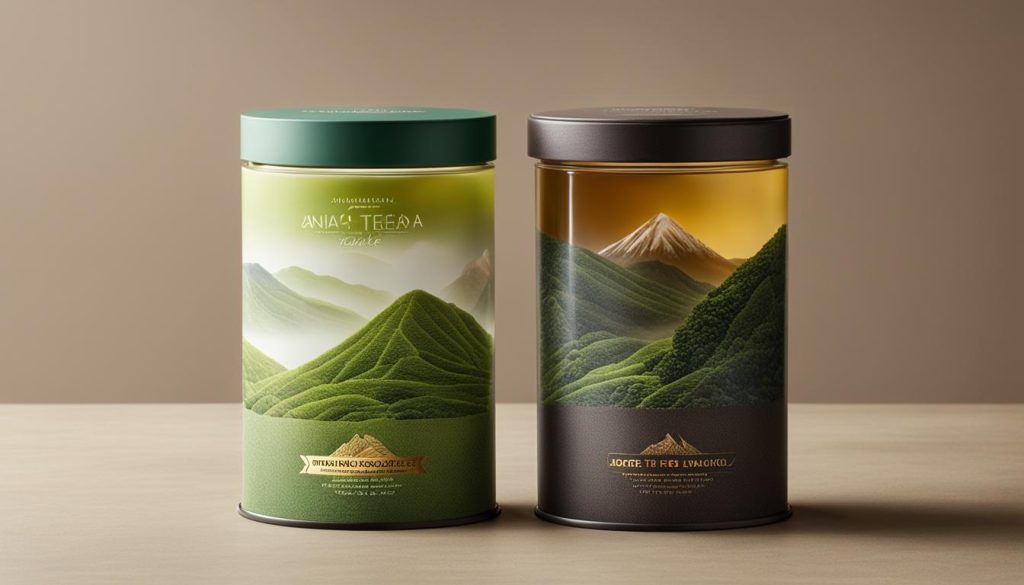
By understanding the impact of picking and handling on tea freshness and implementing proper storage techniques, you can ensure that your tea, whether loose leaf or bagged, remains fresh and flavorful for an optimal tea-drinking experience.
Taste Comparison: Loose Tea vs Bagged Tea
When it comes to the taste of tea, loose tea is often preferred over bagged tea. The flavor profile of loose leaf tea is known for being smoother, more pronounced, and more sophisticated compared to tea bags. The key to this enhanced taste lies in the preservation of essential oils and flavor molecules that are intact in loose leaf tea.
On the other hand, bagged tea is often described as one-dimensional, dull, bitter, and sour in terms of taste. This can be attributed to the grinding process that bagged tea undergoes, which eliminates essential oils and diminishes the overall flavor experience. Additionally, the fine powder texture of tea bags can result in over steeping, leading to a bitter taste due to the larger surface area exposed to water.
Loose tea, on the contrary, maintains a consistent flavor profile that is appreciated by tea enthusiasts and connoisseurs. The intactness of the leaves contributes to a more satisfying and enjoyable tea-drinking experience.
Aroma Comparison: Loose Tea vs Bagged Tea
When it comes to the aroma of tea, loose leaf tea and tea bags provide distinct olfactory experiences. The aroma of loose tea is known for its richness and complexity, offering a sensory delight that captivates tea enthusiasts.
Loose leaf tea, with its intact leaves, retains a more pronounced fragrance. As the leaves are carefully preserved, they release their aroma gradually during the brewing process, creating a captivating experience for the senses. The aroma of loose tea fills the room, enticing the drinker even before the first sip.
In contrast, bagged tea, which undergoes a grinding process, releases its aroma prematurely. The essential oils, flavor molecules, and aromas are exposed to the elements before reaching the cup, resulting in a faint and undistinguishable aroma. The grinding process accelerates aroma release, diminishing the overall experience.
Here’s a quick comparison of the aroma of loose tea and bagged tea:
| Loose Tea | Tea Bags |
|---|---|
| Rich and complex aroma | Faint and undistinguishable aroma |
| Preserves fragrance due to intact leaves | Aroma released prematurely due to grinding |
| Aromatic experience from the first sip to the last | Limited aroma that dissipates quickly |
Choosing loose tea allows you to immerse yourself in the full sensory experience, relishing the delightful fragrance with every brewing session. The aroma sets the stage, promising a delightful and intricate flavor journey.
Brewing Comparison: Loose Tea vs Bagged Tea
When it comes to brewing tea, there are distinct differences between loose tea and tea bags. Understanding the brewing techniques for each can help you make an informed choice based on your preferences and lifestyle.
Brewing Loose Tea
Brewing loose tea requires a few additional steps compared to using tea bags. However, many tea enthusiasts believe that the extra effort is worth it for the superior taste and freshness it imparts.
To brew loose tea, follow these simple steps:
- Measure the desired quantity of loose tea leaves based on your personal taste preferences.
- Place the loose tea leaves in a tea strainer or infuser.
- Bring water to the appropriate temperature, as different types of loose tea require specific temperatures. Use a kettle with a temperature control feature or a thermometer to ensure accuracy.
- Pour the hot water over the tea leaves in the strainer or infuser.
- Allow the tea to steep for the recommended duration, usually 2-5 minutes depending on the type of tea.
- Remove the strainer or infuser, and your tea is ready to be enjoyed.
Using a tea strainer allows the loose tea leaves to expand fully and release their flavors, resulting in a rich and aromatic cup of tea.
Brewing Tea Bags
One of the main advantages of using tea bags is their convenience. Brewing tea bags requires minimal effort and can be easily incorporated into your daily routine.
To brew tea bags, follow these simple steps:
- Place a tea bag in a clean cup.
- Bring water to the appropriate temperature, as different types of tea bags require specific temperatures.
- Pour the hot water over the tea bag.
- Allow the tea to steep for the recommended duration, usually 2-5 minutes depending on the type of tea.
- Remove the tea bag, and your tea is ready to be enjoyed.
Brewing tea bags is quick and convenient, making it a popular choice for those on-the-go or with busy schedules.
Both brewing methods have their benefits and drawbacks, so it ultimately comes down to personal preference. While loose tea may require a bit more time and effort, many tea enthusiasts appreciate the enhanced taste and freshness it offers. On the other hand, tea bags provide convenience without compromising on the overall tea experience.
With the brewing techniques outlined above, you can enjoy a delightful cup of tea, whether you choose to brew loose tea or use tea bags.
For a visual representation of the brewing techniques for loose tea and tea bags, refer to the table below:
| Brewing Time | Required Accessories | Convenience | |
|---|---|---|---|
| Loose Tea | Longer | Tea strainer or infuser | Requires additional steps |
| Tea Bags | Shorter | None | Quick and easy |
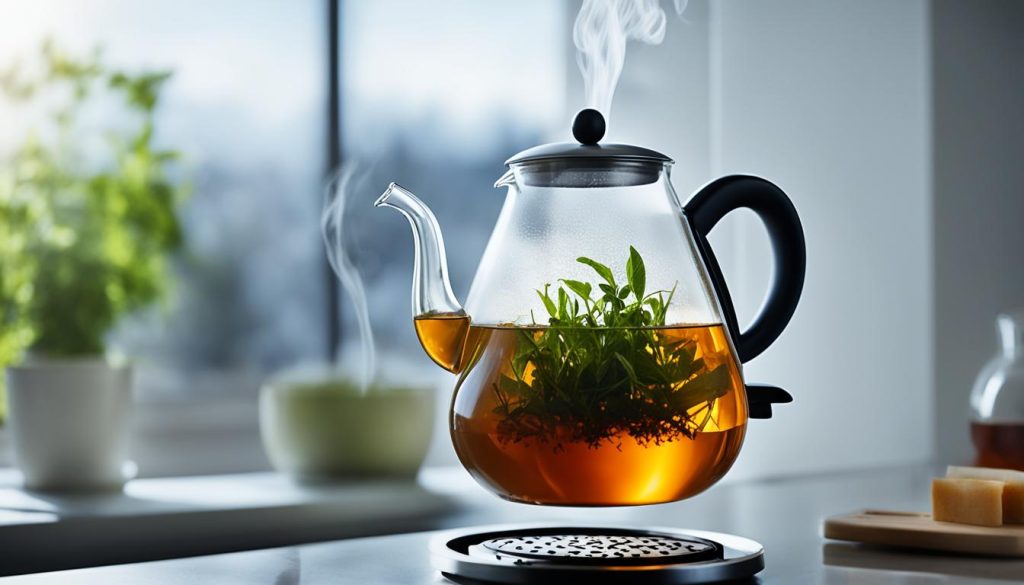
Storage Considerations: Loose Tea vs Bagged Tea
Proper storage is essential to maximize the freshness and flavor of both loose tea and tea bags. Whether you prefer loose leaf tea or tea bags, maintaining the quality of your tea requires suitable storage techniques. In this section, we will discuss the best practices for storing loose tea and tea bags to ensure optimal taste and aroma.
Storage of Loose Tea
When it comes to storing loose tea, the key is to protect it from external factors that can degrade its quality. Here are some proper storage techniques for loose leaf tea:
- Choose an airtight container: Using an opaque, airtight jar or container is crucial to shield loose tea from exposure to air, moisture, light, and strong odors. This helps preserve its freshness and flavor.
- Store away from heat: Keep your loose tea away from direct sunlight and high temperatures, as heat can accelerate the degradation process and negatively impact the taste and aroma.
- Avoid moisture: Moisture can cause tea leaves to become damp and lose their flavor. Make sure the storage container is moisture-free, and avoid storing tea in the refrigerator or near sources of humidity.
By following these proper storage methods, you can maintain the quality and freshness of your loose tea for an extended period.
Storage of Tea Bags
Properly storing tea bags is equally important to preserve their freshness and flavor. Consider the following storage techniques for tea bags:
- Opt for airtight packaging: Tea bags usually come in sealed, airtight packaging. It’s essential to keep them in their original packaging until you’re ready to use them to prevent exposure to air and moisture.
- Choose a cool, dry location: Similar to loose tea, tea bags should be stored in a cool, dry place away from heat and humidity. This helps maintain their quality and prevents any unwanted flavor changes.
When storing both loose tea and tea bags, it’s important to keep them away from strong-smelling substances, such as spices or coffee, as tea can easily absorb odors from its surroundings.
| Proper Storage Techniques | Loose Tea | Tea Bags |
|---|---|---|
| Container Type | Airtight, opaque jar | Original sealed packaging |
| Exposure to Air | Avoid | Avoid |
| Exposure to Light | Avoid | Avoid |
| Exposure to Heat | Avoid | Avoid |
| Exposure to Moisture | Avoid | Avoid |
| Storage Location | Cool, dry place | Cool, dry place |
By storing your loose tea and tea bags properly, you can ensure they retain their freshness, aroma, and flavor for a delightful tea-drinking experience.
Preference of Serious Tea Drinkers
Serious tea drinkers, including tea connoisseurs and enthusiasts, have distinct preferences when it comes to their choice of tea. The inherent qualities of loose leaf tea make it highly favored among this discerning group.
Loose leaf tea is highly regarded for its higher quality and superior taste. The leaves are typically handpicked and undergo minimal processing, allowing the natural flavors and aromas to be preserved. This results in a more refined and complex flavor profile that serious tea drinkers appreciate and savor.
Additionally, loose leaf tea offers better value compared to tea bags. While some premium tea bags have improved in quality, loose leaf tea remains the top choice for those who prioritize the overall tea-drinking experience. The ability to steep and observe the leaves directly in a tea infuser allows for a deeper connection with the tea’s origin and character.
For serious tea drinkers, the enjoyment of tea extends beyond a simple beverage. It is a ritual, an art to be savored and appreciated. The nuanced flavors, delicate aromas, and exquisite presentation of loose leaf tea elevate the tea-drinking experience to a whole new level of enjoyment.
If you consider yourself a serious tea drinker or want to explore the world of premium teas, we highly recommend trying loose leaf tea brands such as Brand A and Brand B. These brands are known for their exceptional quality and selection of teas that cater to the preferences of tea connoisseurs and enthusiasts alike.
Enhance your tea-drinking journey with the rich flavors and refined qualities of loose leaf tea. Discover the art of tea and indulge in a truly remarkable sensory experience.
| Loose Leaf Tea | Tea Bags | |
|---|---|---|
| Quality | Higher | Varies |
| Taste | Enhanced, sophisticated | One-dimensional, dull |
| Value | Better | Varies |
| Aroma | More fragrant | Faint, undistinguishable |
| Experience | Ritualistic, artful | Convenient, practical |
Recommended Brands and Conclusion
When it comes to choosing the best tea options, there are several recommended brands for both loose leaf tea and tea bags. For those who prefer the convenience of pyramid-style tea bags, we highly recommend brand X and brand Y. These brands offer a wide range of flavors and are known for their quality and freshness.
On the other hand, if you’re a serious tea drinker looking for the ultimate tea experience, we suggest exploring loose leaf tea options. Brand A and brand B are among the top recommendations for loose leaf tea. They source their tea from reputable tea estates, ensuring the highest quality leaves that are packed with flavor.
In conclusion, while convenience and cost are important factors to consider, loose leaf tea generally offers superior quality, taste, and overall value for serious tea drinkers. Its freshness, enhanced flavor profile, and the ability to appreciate the subtleties of each cup make loose leaf tea the preferred choice among tea enthusiasts. However, for those seeking quick and easy brewing, premium pyramid-style tea bags from brand X and brand Y are excellent options.
